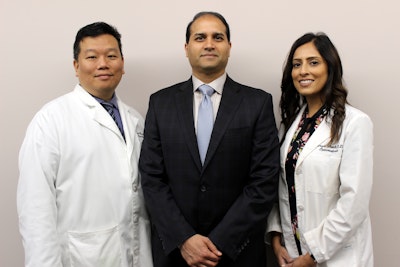
Dry Eyes
Dry eyes can be distracting and irritating. They make contact lenses uncomfortable and cause redness, watering, and itchiness.
Clinically known as dry eye syndrome, the condition is generally caused by poor tear quality or an insufficient amount of tears.
But does the cause of my dryness really matter?

Two Types of Dry Eye Require Two Different Treatments
Aqueous Tear-Deficient Dry Eye
Aqueous tear-deficient dry eye means that your eyes do not produce enough natural moisture. Various factors can impact the function of the lacrimal glands, which are responsible for creating tears.
Evaporative Dry Eye
Healthy tears are made up of oil, water, and mucous. When this balance is disrupted, it can result in evaporative dry eye. Because poor-quality tears evaporate too quickly, they do not have time to lubricate the surface of the eye.
Age and Medications Are Just Two Causes
Women are more prone to developing dry eye. Your risk also naturally increases as you age.
Certain medications such as antihistamines, birth control, antidepressants, and acne medications can increase your risk. Additionally, some medical conditions including diabetes, rheumatoid arthritis, and thyroid disorders can make you more susceptible. Dry eye is also a common complaint among patients with blepharitis or skin conditions such as rosacea.
Certain occupations and hobbies can increase your exposure to drying environmental factors. Windy or dusty conditions, for example, can result in persistent eye irritation.
But How Do These Factors Cause Dryness?
Reduced Tears
Some medications and several medical conditions compromise the health of the lacrimal glands, which can affect your capacity to produce enough tears.
Poor-Quality Tears
Blepharitis and rosacea are linked to improper function of the meibomian glands, which are responsible for producing the oily component of tears.
Decreased Blinking
Sometimes, tasks such as driving for long periods, or computer, tablet, and mobile device use are the primary cause. These tasks decrease blink rate, and blinking is necessary to distribute tears across the surface of the eye.
“Dry eye disease deserves serious professional — and personal — attention. It can be very debilitating and seriously diminish a person’s quality of life.” Dr. Rachel Bishop, chief consulting ophthalmologist at the National Eye Institute
Begin by Assessing Habits, Medications, and Your Health
Schedule Overdue Exams
Are you overdue for an eye exam or yearly physical? Start there. Make sure to discuss your dry eyes with both your eye doctor and primary care provider. Sometimes a simple screening can identify an underlying cause.
Break Bad Habits
Are your late nights scrolling through social media catching up with you? Do you often forget sunglasses when you cycle outdoors? Keep track of your daily tasks and strive to break bad habits that could be contributing to your condition.
Eat Well for Healthier Eyes
Emerging research supports the idea that a healthy diet can improve ocular health and ease dryness. Foods that are high in omega-3 fatty acids, such as tuna, soybeans, and flaxseed, are recommended. Some may find relief by using supplements specifically intended to help dry eye.
Diagnosing Dry Eye is Simple
Dry eye can usually be diagnosed by discussing the severity and frequency of your symptoms with your doctor. That said, properly treating your dryness requires further investigation into the underlying causes. Note that dry eye can actually cause excessive tearing as the lacrimal glands struggle to relieve dryness and irritation. Whether your eyes are too dry or too watery, do not delay speaking with a doctor.

A discussion with your doctor can often reveal if you suffer from dry eye syndrome.
Your doctor might also conduct a slit lamp exam to confirm that your eyes are not producing enough tears. Some practitioners will administer the Schirmer tear test to determine whether you suffer from a low volume of tears. A small strip of filter paper will be placed inside the lower eyelid, and readings can be taken after just five minutes. More rarely, testing is conducted to assess the quality of your tears.
Lifestyle Changes and Eye Drops Can Usually Relieve Dryness
Rest and Protect Your Eyes
Resting your eyes throughout the day, consistently wearing sunglasses, and minimizing irritants can often provide sufficient relief. Your doctor can help identify the best lifestyle changes based on your needs.
Increase Moisture
If your eyes are not producing enough tears, doctors will generally take two approaches: adding tears or making the most of the tears you create. Wetting drops are a conservative way to add lubrication to the surface of the eyes. Plugging the punctal ducts (the tubes that drain tears from the eye) can also help. Small devices can be placed in these ducts, or they can be permanently closed.
Compresses and Eyelid Cleansers
Relieving inflammation, which is often tied to meibomian gland dysfunction, can help address issues with tear quality. Applying warm compresses, using eyelid cleansers, and massaging the eyelids have all been found to be effective.
In-office Procedures
Treatments designed to open and clear blocked glands might be recommended in more severe cases. Prescription eye drops, such as Restasis or Xiidra®, can also increase the production of high-quality, moisturizing tears.


